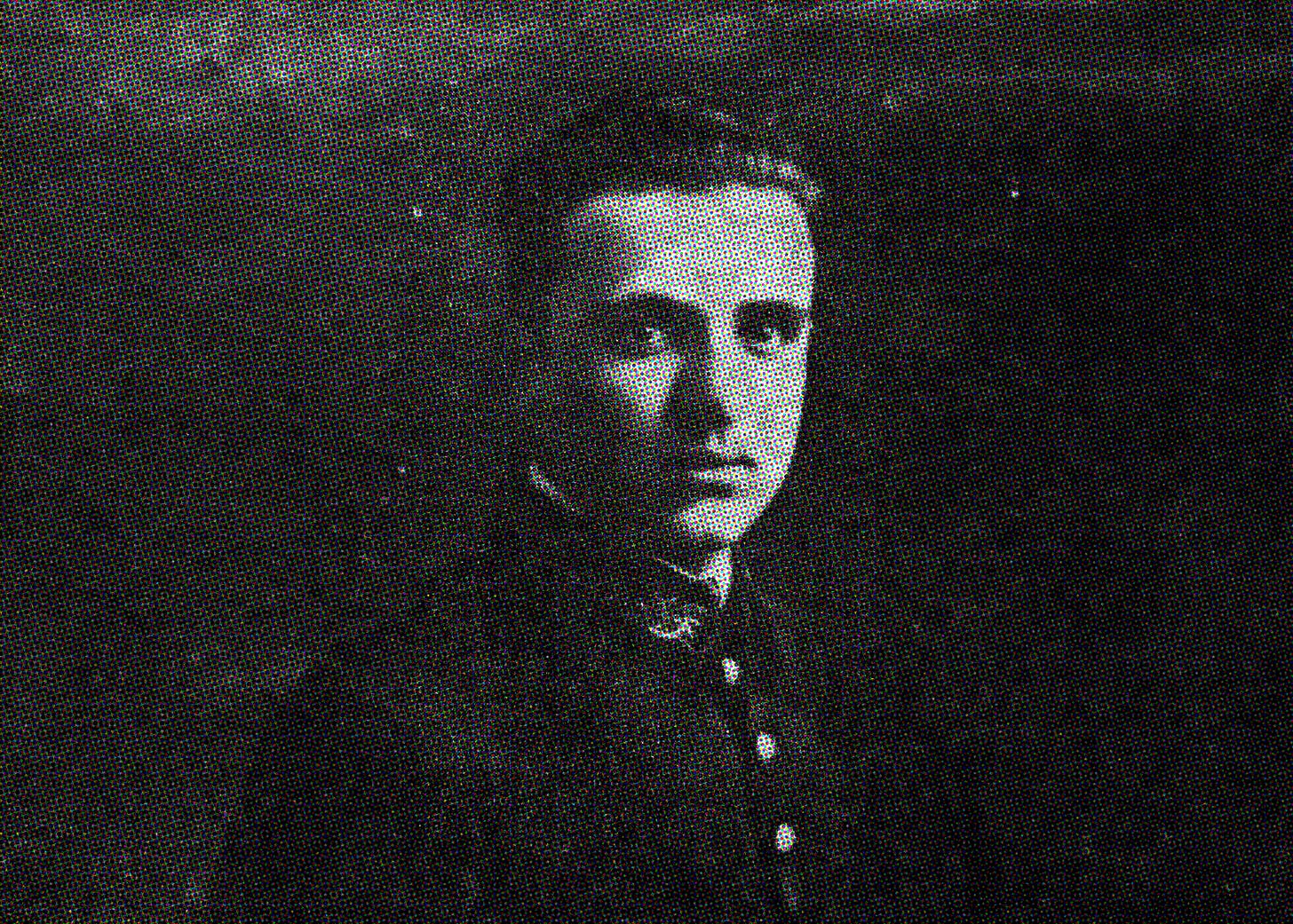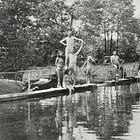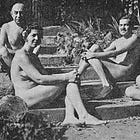Hobeiche’s nudist revolution
How Sheikh Fouad Hobeiche bridged cultures to foster Arab nudism in 1930s Lebanon
Only a small minority of the population has embraced the concept and practice of social nakedness, except for community bathing in China prior to 1,000 CE, and in Korea and Japan from then to the mid-1800s. While many authors have envisioned utopian or ideal settings for social nakedness, these ideas were typically practiced by small, isolated groups.
Over the past two millennia, the process of MELU—Multi-cultural Engagement for Learning and Understanding— has been applied. Thanks to Xuanzang for bringing the gymnosophists’ ideas from India to China, and to Dosho for introducing public baths with social nakedness from China to Japan. Additionally, thanks to Edward Carpenter, John Russell Coryell, Fridtjof Wedel-Jarlsberg Nansen, and Walt Whitman, whose Western perspectives and keen observational skills helped document Eastern experiences. Their writings and conceptualizations of different cultural values have positively contributed to the literature, making modern nudism, while Western-grown, fundamentally influenced by Eastern ideas. If names are to be listed as the progenitors of modern nudism, naturism, and social nakedness activities, then clearly, they need to include Carpenter, Coryell, Nansen, and Whitman.
Hobeiche's contributions
Taking literally foreign concepts and translating them into one’s native language in a culturally appropriate manner is a burden and an uncommon feat. It is MELU. In 1930, the same year as when Timothy Wang (1882-unknown) of China was in Europe and translated other’s nudist experiences as well as writing about his own adventures in Chinese, Sheikh Fouad Hobeiche (1904-1973) translated into Arabic a series of publications that had first appeared in French.
In 1934, he then began to publish a regular newsletter, “The Revealed,” in his hometown of Beirut, Lebanon, and did so for over a decade. The ideas of German nudism, as experienced by a French adventurer, became the seed for the practice of social nakedness in the Middle East. Hala Bizri accounts this remarkable story in “The Nudism of Sheikh Fouad Hobeiche” in 2012, which appears as a chapter in Art, Awakening, and Modernity in the Middle East: The Arab Nude edited by Octavian Esanu.
Hobeiche took French materials about a visit to German nudist camps, and while translating them into Arabic, he was sharing them with communities in the Middle East. The culture receiving the message was very different than the source, although the French had been the colonial power in Lebanon since the fall of the Ottoman Empire and the end of the First World War. There was some grounding and familiarity with the French at that time. These associations even led to the common name for Beirut as “The Paris of the Middle East.”
Bizri reports that Hobeiche’s philosophy was reflected in the title of his newsletter. The publication was al-Makshuf (The Revealed). He “Revealed” information about not only practices that were taking place around the globe but also implied the activity of being honest about one’s own body and that through social nakedness, such forthrightness be “Revealed” or to denude the topic. He wanted not only the social nakedness of the body but also the capacity to question other cultural and historic conventions. He wanted to see advancement in his homeland on many fronts. He called his newspaper and publishing house al-Makshuf in keeping with his revelatory writings.
Translating and spreading nudist ideas
French writer Louis-Charles Royer wrote Au Pay des Hommes Nus (In the Country of Nudists) as a series of articles in a Paris paper in 1929. Royer recounted his travels in Germany while he was convalescing. Nudism offered him a way to foster his health and obtain new insights into life in nature. Family friendly social nakedness was a healthy practice for mind and body. Hobeiche actively read the Parisian papers for ideas he could foster in Lebanon. In 1930 Hobeiche was translating and publishing Royer’s pieces in al-Ahrar (The Free). He published all of Royer’s accounts in a new book with a new title, Rasul al-‘Uri (The Messenger of Nudism), in which he also boldly expressed his opinions. From the title, Hobeiche became known as The Messenger of Nudism in the Middle East.
Kirsten Scheid wrote “Looking At/As Nudes: A Study of a Space of Imagination” as Chapter 6 in Fashioning the Modern Middle East: Gender, Body, and Nation in 2021. In it, she commented on Hobeiche, who was a young writer who immersed himself in his topics and wrote about them in personal terms. Hobeiche also added his own commentary and experiences in with Royer’s travelog when he published it. Take Hobeiche’s reflection from Rasul al-‘Uri: (the italics are his)
This summer I wanted to try experiencing the life of nudism myself. So a friend and I spent twenty days on the beach of ‘Amshit completely naked, bathing in the sea, exposing our bodies to the sunrays and air currents, and exercising our muscles at the oars. We gained health, vigor, peace of mind, clarity of thought, which secured our spending the winter season in a state of physical and mental blessedness which neither the visitors of ‘Alay and Sufar nor the frequenters of tea parties and all-night shindigs have ever known.
The publication of the book was a scandal. It challenged sexual, moral, as well as religious tenets.
In 1930, he also published in al-Ma’rid (The Exhibition) newspaper an article “About Nudism.” This included a reference to Plutarch (c45-120 CE), who had promoted nudity in Greece, especially among young people. Hobeiche wrote:
Nudism is a simple remedy, which physical medicine finally discovered after having long disregarded and scorned it…indeed, experience has shown that clothing is harmful to the body, and that sunshine and fresh air contain necessary vital elements; they decided to dispense with clothing at certain times, and expose all parts of the body to the light, sunshine, and open air.
People’s faith in religion and moral codes diminished, and they boldly began to satisfy their repressed physical desires. Just as Christianity delivered humanity two thousand years ago, so shall nudism deliver humanity itself from what Christianity delivered it from, passing through one of the stages on the road too attaining the ideal.
Alois Knapp, an American nudist pioneer in the 1930s, stated, “Nudism is the greatest social revolution in two thousand years.”
Hobeiche saw such practices as assisting parents with sex education:
It is certain that nudism—instead of arousing people’s animal desires—cultivates a sense of beauty within them, beyond what can be done by teaching biological reproduction, which is difficult for parents and educators to impart to young people in this day and age.
Bizri reports that one of Hobeiche’s peers and supporters, Khalil Taqi-Eddin, wrote:
Nudist literature is true, live literature…and classic Arabic literature is timeless literature, because it is naked, revelatory (makshuf) literature.
Evolution of Hobeiche’s views
Hobeiche was honored for being so forthright on a number of social topics, including homosexuality and the rights of women. However, by 1945, he was reversing some of his long-held and controversial positions on women’s roles. He wrote that perhaps women still need to be focused on the home and children so as not to seek professional positions in society.
Bizri concludes the chapter with a suggestion that perhaps Hobeiche was not so egalitarian. While his publications showed naked females, they mostly contained clothed or at least strategically covered males. Perhaps as he saw more of the world, including the Arab world, his positions began to change. Getting married and having his own children may have also tempered his passion for nudism. Hobeiche wrote in 1945:
If Lebanese women learned what women in the rest of the world, who enjoy their rights, have and continue to suffer from, they would prefer to keep the power they have now instead of exchanging it for another type of power.
Perhaps Hobeiche’s reading of Parisian papers opened his youthful eyes and mind and enabled him to bring social nakedness to Lebanon. His writings supported other authors and artists, as reported in Art, Awakening, and Modernity in the Middle East: The Arab Nude, edited by Octavian Esanu. The fifteen years between 1930 and 1945 were opportunities to advance new concepts, but after yet another world war, the desire for a foundation of stability from the past offered a way forward.
There was a spark that almost caused the region to burst forward with a new sense of the human body. Another spark that had previously lit the region was of a painter, Khalil Gibran (1883-1931). His capturing of the nude became central to his later, world-known book, The Prophet. Those ideas, thoughts and images have circulated around the globe with warm reception. 🪐
Editor's note: Carl Hild, PhD, has had a distinguished career as an influential naturist, contributing to N Magazine and The AANR Bulletin for many years. A talented stone sculptor, Carl also designed the Skinny Dipper Ensign and developed the capital ‘N’ logo used by The Naturist Society. As a historian of early naturism, Carl is working on a series of articles on early nudist pre-history for Planet Nude, with this article on Hobeiche being the latest installment. Thanks to a generous donation by Dr. Hild, the Western Nudist Research Library recently obtained some of Hobeiche’s monthly newsletter al-Makshuf that are in Arabic.
Incidentally, today is Dr. Hild’s birthday. Happy birthday, Carl!








Such informative articles encourage us to practice our naturism lifestyle with more enthusiasm..It just confirms as how naturism is being followed throughout generations..Such articles also help us to memorize & to thank such unsung people who contributed naturism & further inspired next generations throughout their lives ...
Carl, as I mentioned when you and Evan shared this finding during our last WNRL meeting, "Mind Blown"! It is such a rare and important find. Given that al-Makshuf (The Revealed) was published for many years, it shows that a certain portion of the population in the Lebanese culture (and I would guess just about any culture) is receptive to the nudist lifestyle. My sincere thanks to Evan for actually finding the volume of al-Makshuf (The Revealed) for sale and for your generous donation of it to WNRL. We will treasure it and digitize it so that others can access it as well.